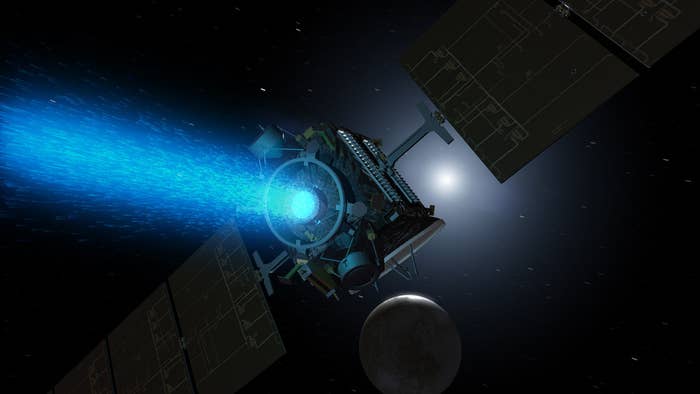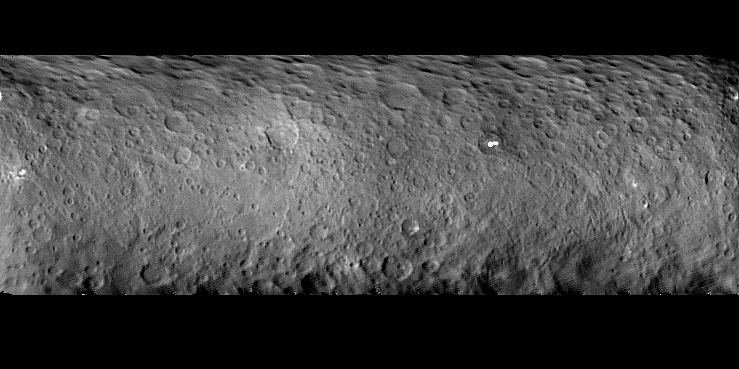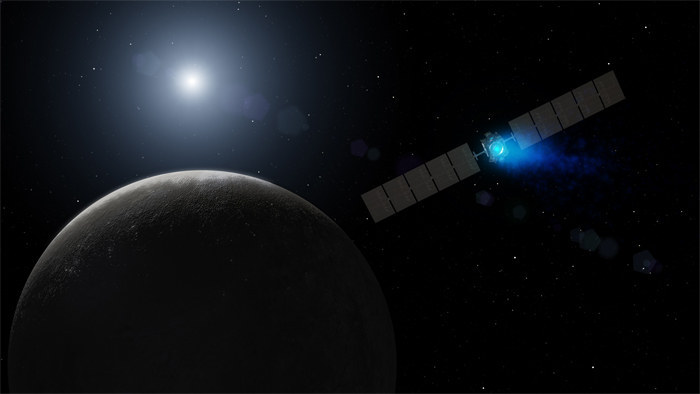This is Ceres, a dwarf planet:
This is NASA's Dawn spacecraft:

On Friday, Dawn, launched in 2007, began orbiting Ceres, the largest celestial body between Mars and Jupiter.
View this video on YouTube
The craft will take photographs and send back information to determine if the dwarf planet's surface is geologically active. The images will also provide a glimpse into the history of our solar system.
"Studying Ceres allows us to do historical research in space, opening a window into the earliest chapter in the history of our solar system," said Jim Green, director of NASA's Planetary Science Division at the agency's Headquarters in Washington. "Data returned from Dawn could contribute significant breakthroughs in our understanding of how the solar system formed."
"Dawn is about to make history," said Robert Mase, project manager for the Dawn mission at NASA's Jet Propulsion Laboratory in Pasadena, California. "Our team is ready and eager to find out what Ceres has in store for us."
Dawn has been sending photographs of Ceres back to NASA since January. The craft has already captured some bright spots on the surface.

According to NASA:
Recent images show numerous craters and unusual bright spots that scientists believe tell how Ceres, the first object discovered in our solar system's asteroid belt, formed and whether its surface is changing. As the spacecraft spirals into closer and closer orbits around the dwarf planet, researchers will be looking for signs that these strange features are changing, which would suggest current geological activity.
Dawn will orbit Ceres for 16 months, and then fly off into space – this is the craft's final mission.


